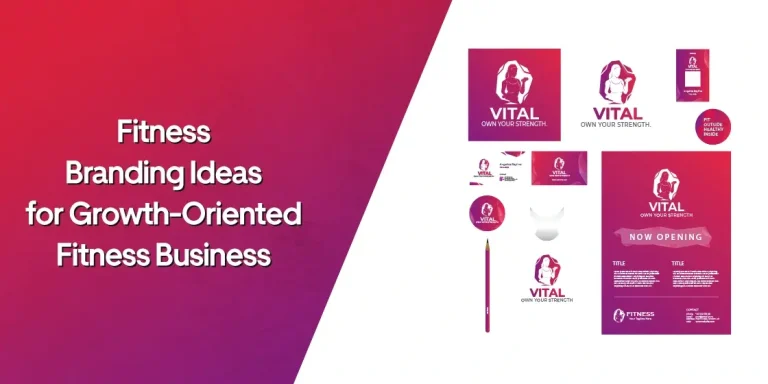
Table of Content
What is Business Stationery Design?
Stationery design is the process of designing and creating custom-made paper products for a specific client or company, which includes anything from business cards and letterheads to envelopes and notepads. These can either be used for personal or professional correspondence, and can be designed with the help of freelancers or a branding agency.
For professional use, stationery design typically focuses on personal or company branding. Professionals as well as small and large businesses often have their logos and other branding elements featured on their stationery for the purpose of marketing their brand. These items are often gifted as souvenirs to customers so that their usage gives more exposure to the brand.
Consider a pen featuring a company logo, whenever one of your customers uses it, it shows that they endorse your brand and serve as brand ambassadors who advertise your products and services wherever they go. It’s like a walking advertisement, that too, without any ongoing costs.
There can be many more ways to create custom stationery designs for branding. Companies can gift customized branded stationery to their employees for celebrating their birthdays, new jobs, weddings, anniversaries, or promotions. In case the employees share these kind gestures on social media stories or a LinkedIn post, it serves as a brand endorsement.
Collectively, such posts suggest a high employee satisfaction rate that boosts a brand’s image and indicates that it responsibly follows industry best practices. That, in turn, also gives the company an edge over its competitors, attracting more customers as a more desirable choice among others.
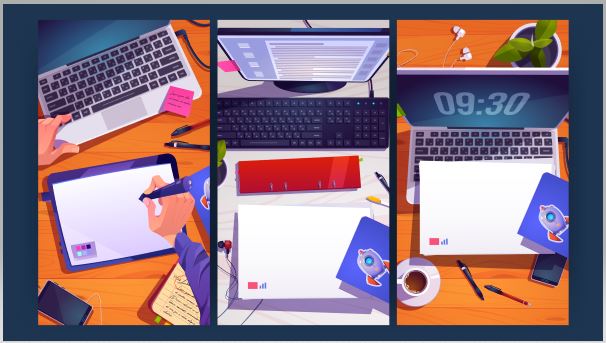
What Does a Stationery Designer Do?
A stationery designer will often have a strong background in graphic design, as they will need to be able to create cohesive and visually appealing designs that accurately represent the branding ideas of their client.
Stationery design can be a very rewarding process, as it allows designers to use their creativity to craft unique products that will be used on a daily basis by their clients. It is also a great way to build up a portfolio of work, as stationery design is often an ongoing process for many businesses. Here are some of the tasks that a stationery designer is responsible for:
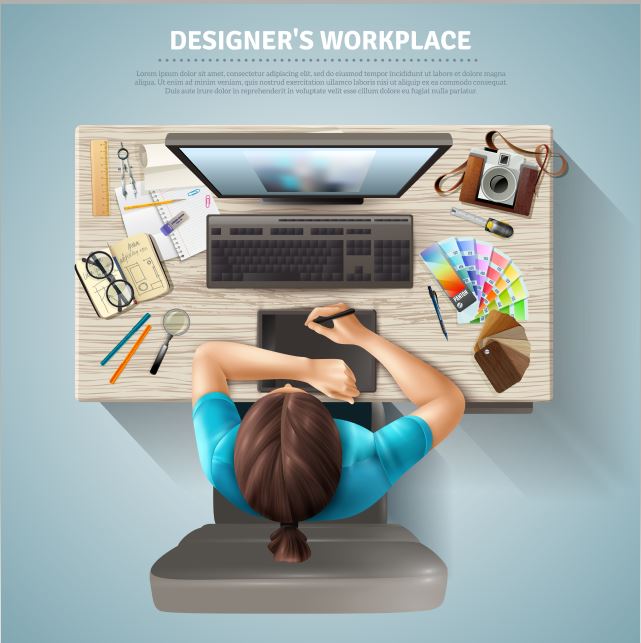
Learn what the client wants:
The first step of a design process for a designer should be to meet with the client and understand the brand better. Learning what vision they have for how the end product should look would give you a good idea about what they’re expecting and whether or not your client should opt for that approach. In this manner, a stationery designer works not simply as a designer but also as a design consultant.
Often clients come to the table with their own ideas, but it is the designers job to improve on them, and discuss a work around in case of having any reservations regarding it. Be sure to ask the client some essential questions regarding the company to ensure that you fully understand the brand.
Brainstorming before setting pen to paper:
Before beginning any creative process, brainstorming is crucial for a designer to get a clear picture on what they’re aiming to achieve with their artwork. There are several questions that one should have pre written before beginning to work on the design process.
They should question what kind of a customer-base a business has. Of course, not all businesses need to have stationery that has corporate elegance and minimalism. Consider a software house that designs games for recruitment hiring. Such a company is neither a full-fledged game development firm, nor too corporate-like.
It demands a balance between these two, so a designer would need to keep that into consideration and ensure that it does not go over the top with either one of the two extremes. Similarly, if your client is a law firm, you’ll want to avoid using playful or casual fonts and colors in their stationery. Instead, opt for something more professional and sleek.
Prepare the Artwork:
In the third step, designers need to do what they do best, that is, design. There are multiple tools for creating artwork for business stationery. For those who are absolute beginners, Canva would be the best choice.
On the other hand, intermediate level designers can work on Procreate or Adobe. Moreover, It’s important to know that the artwork should be aligned with the kind of product it would be printed on. So giving that due consideration would save you a lot of time.
Prepare the Stationery Layout:
Where your artwork goes, how it’s positioned, all of this must be decided differently for each type of stationery item. For letterheads the design will be accommodated in terms of the paper size, the same goes for cards as the giver often leaves a handwritten note, for which there should be ample room on the stationery.
Working on the Production Process:
Stationery designers may often need to work as overseers of the production process as well. Their active input may be necessary, especially because all the effort that went into preparing the design work was not meant for a digital, rather, a physical usage. Therefore, it’s essential for the digital work to translate onto the physical, without losing its quality.
In short, a Stationery Designers job is to ensure that the end-product design accurately reflects the company’s values and image.
What are the Benefits of Business Stationery Design?
While some businesses are choosing to go entirely digital, there are still many benefits to using physical stationery. Here are some ways in which stationery designing can benefit your business; it:
Helps You Connect with Your Customers:
For one, custom branded stationery can help businesses create a more personal connection with their customers. When someone receives a handwritten note or a well-designed card in the mail as a thoughtful way to show appreciation for their business.
Such gestures help brands and clients create a personal and an even greater connection than before. Moreover, in most cases, stationery items increase the number of returning customers to a business. Need to make an inquiry? Just tally the number from a stationery item and make a call!
Gives Businesses Ample Room for Creativity:
Additionally, business stationery can be a great way to show off your company’s personality. By including a tagline or using fun fonts and colors, you can give recipients a glimpse into your company culture.
Gives Businesses a Non-Intrusive Exposure:
With brands often up selling their products with a larger than life branding approach, the advertisements and in fact the entire marketing campaigns can become too direct and blunt in their marketing pitch. By using stationery, businesses get to advertise themselves in the most subtle, yet effective manner.
Often, companies do not even need to share what they are all about. The entire point for a company to gain exposure for itself, is to give a gentle reminder to their audience to engage and interact again with them. This non-intrusive marketing approach is what gives branded stationery designs an evergreen benefit of unfailingly proving itself in the track records.
Unmatched Potential for Maximum Visibility:
As brands compete with one another over who would take up the most ad slots on prime time and who would have the best and the largest billboard in town, customer’s use of branded stationery allows a brand to market themselves in ways unimaginable without stationery advertising. That is to say, in places where no brand can advertise, stationery designs can, by making its way into schools, hospitals, small and large offices, in short, everywhere.
It’s Inexpensive:
From designing to producing stationery items, it is a one-time investment for companies which lasts as long as the items do. Clearly, the marketing tactic promises a high ROI. The low costs of producing these items is what has made this approach so popular among small businesses.
Moreover, access to ready-made templates and user-friendly design apps such as Canva have actually eliminated the need for hiring an expert stationery designer. With some effort, small business owners can produce an end-product with a decent design.
Shows You Mean Business!
Today, business cards have become very common for anyone who’s dealing with clients and customers on a day to day basis. In fact, for several small businesses, custom-made stationery is a first step towards projecting their professionalism.
In such a tough market competition, if someone were to ask you for your visiting card and you were to tell them that you don’t have any, they’d be unimpressed. That’s because as something so common, not having one shows a person is not serious about their business.
Must-Have Essential Elements in a Business Stationery Design
There are some business stationery design elements that are absolutely essential in effectively creating stationery items.
Company Logo:
The company logo should be prominently featured on all business stationery designs. This is the best way to ensure that recipients will instantly recognize who the stationery is from.
Contact Information:
Make sure to include your company’s contact information on all business stationery designs. This should include the company name, address, phone number, and email address.
Tagline:
A tagline is a brief phrase that sums up the company’s mission or values. Including a tagline on business stationery is a great way to make a lasting impression on recipients.
Color Scheme:
The colors used in business stationery should be in line with the company’s branding. For example, if a company’s logo is primarily green, then green should be used as the dominant color in their stationery designs.
Fonts:
The fonts used in business stationery should be easy to read and professional-looking. Avoid using excessively fancy or decorative fonts, as these can be difficult to read and may not convey the desired image.
Images:
Including images on business stationery can be a great way to add visual interest. However, make sure that any images used are high-quality and relevant to the company’s business.
Paper Quality:
The paper quality used for business stationery should be high-quality and professional-looking. Avoid using thin or flimsy paper, as this will give the impression that the company is cheap or unprofessional.
Business Stationery Design Examples:
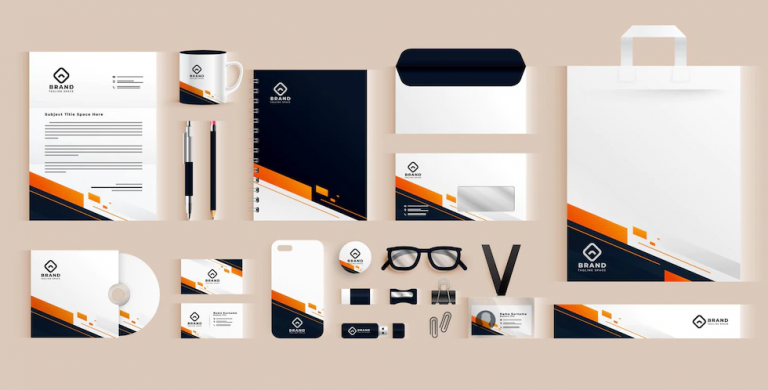
Given that there are so many types of stationery items that you can choose for branding, it could become a challenging task to choose which ones to opt for in terms of their suitability with your business: the products and services you offer. To make it easier for you to choose, we have created a list of some of the most essential items suitable for all businesses.
Business Cards
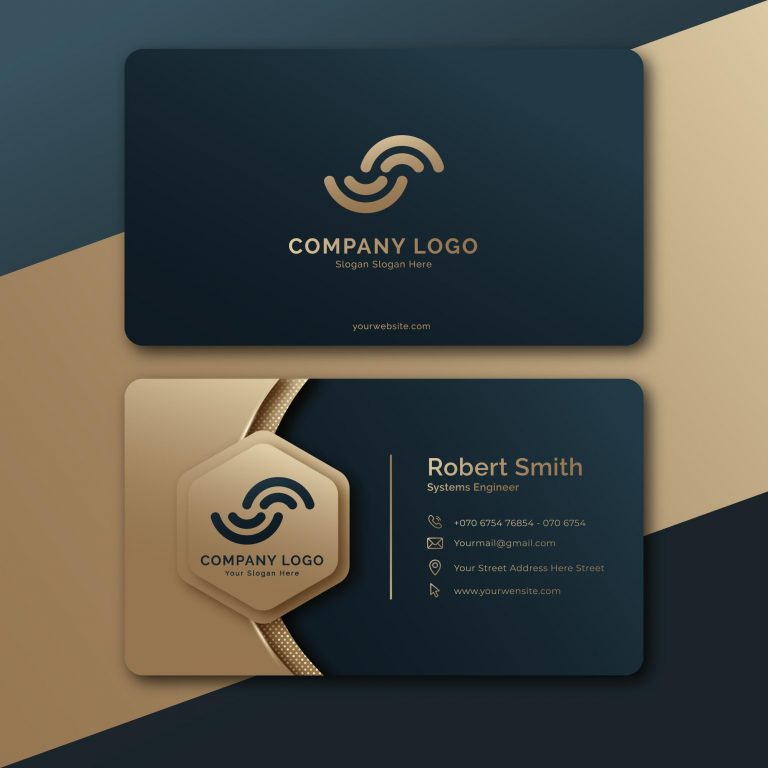
Undeniably, the number one, go-to option when choosing a stationery item would be Business Cards. These business cards serve as a means for introducing your company to a potential client, customer, or anyone with a shared professional interest. The most important thing to remember when designing these is to make sure that the fonts for business cards are chosen with care for enhanced readability.
Letterheads

All professional correspondence is communicated through a letterhead that is aligned with your brand identity. This would allow you to market yourself in each of these correspondences with the same subtlety and non-intrusiveness that we talked about earlier in this article.
Corporate Envelopes
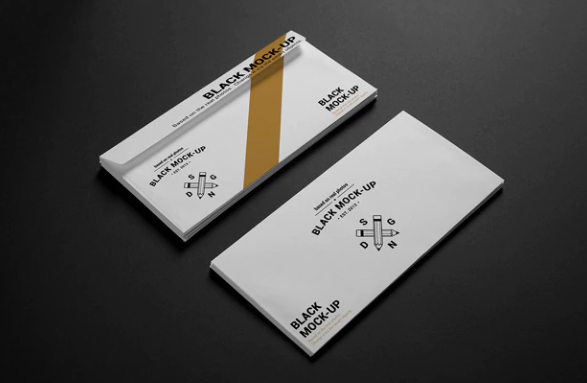
All professional correspondence is communicated through a letterhead that is aligned with your brand identity. This would allow you to market yourself in each of these correspondences with the same subtlety and non-intrusiveness that we talked about earlier in this article.
Invoices
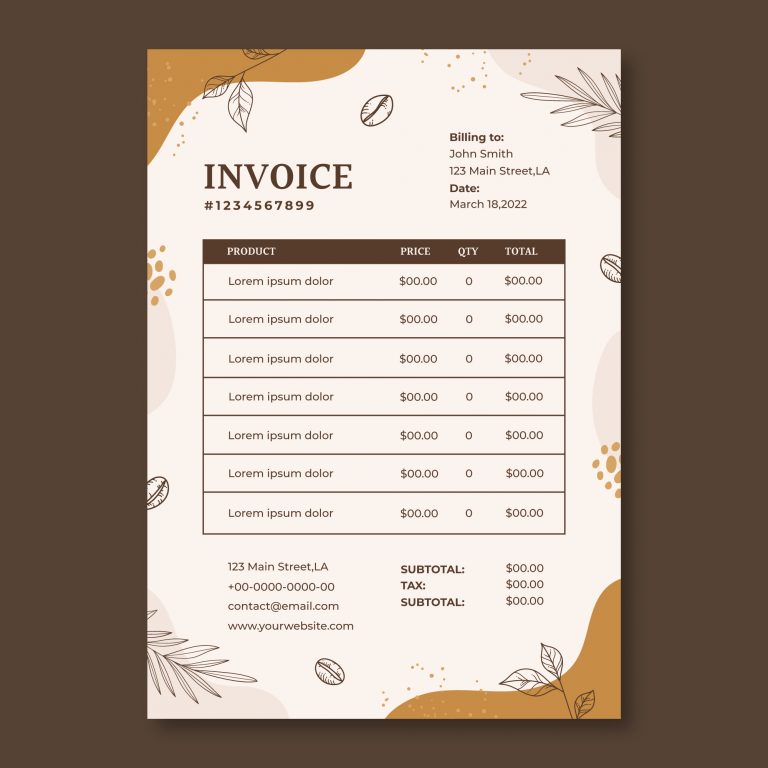
Customizing your brand’s invoices would allow your customers to instantly recognize your receipt without having to read through it. While you can’t go over the top with invoice designs there is still plenty of room to have a logo and a minimalist design.
Pens:
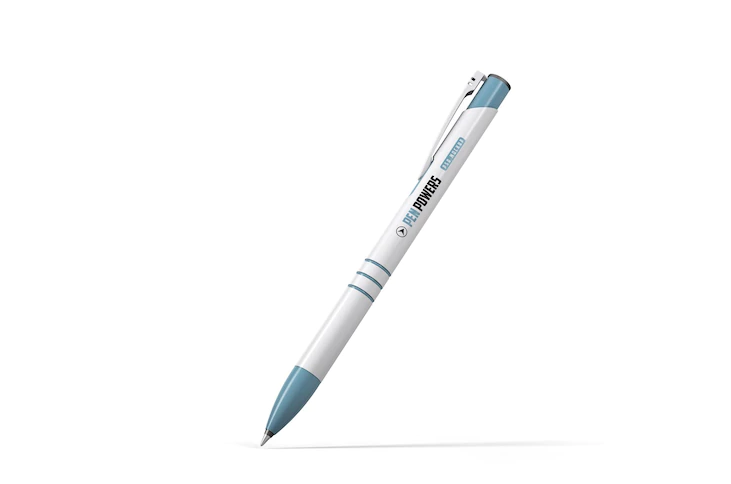
A pen is one of the most useful items that is more of a gift than a necessary item which is used in business processes. Nevertheless, pens are something which your customers would carry with themselves, meet with multiple clients, sign documents, and in doing so either indirectly introduce your brand to potential customers or increase the rate of the returning customers with the help of such non-intrusive reminders.
Calendars:
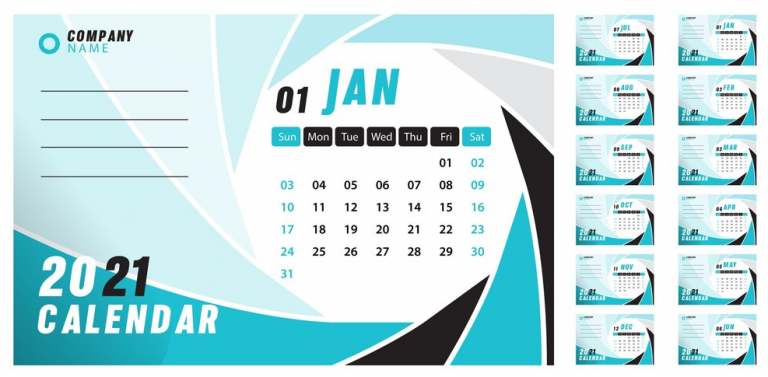
Calendars are not really the most essential stationery items to sport a customized design, however, it’s still one of the things that most of your customers and clients can make use of. Having it either on the wall or right in front of their desk. Such constant exposure would inadvertently instill in your client/customer’s mind a subconscious connection with your brand.
Frequently Asked Questions
| 1- What is included in business stationery? Business stationery includes each and every piece of paper used for professional communications. These range from letterheads, invoices, folders, business cards, and envelopes etc. |
| 2- What does a stationery designer do? A stationery designers job is to design customized stationery for a company that is aligned with its brand identity. These stationery items range from letterheads, business cards, greeting cards, and all such paper-based documents and materials used in official communications. |
| 3- What are the most important requirements in business stationery? Some of the most important things that most business stationery items should have include: – The name of the business name. – The business location and address. – Business numbers – Email address – Website address |
Conclusion
Both small and large businesses make use of their business stationery items for the purpose of promoting their brand in a non-intrusive manner. A stationery designer helps businesses in this regard, by creating custom designs for different kinds of items. Given its myriads of benefits, it is worth investing in stationery items for your business.
At the least, the most important one’s are unquestionably crucial to have, such as business cards. Otherwise, a business risks leaving an impression of unprofessionalism. If you wish to learn further on the subject, check out our resource on the best business cards design and printing services.

Logopoppin
Logopoppin is a graphic design agency that specializes in logo designing, web development, video production and advanced branding services. We love to innovate businesses with new age technologies, allowing them to improve their visual reputation.

